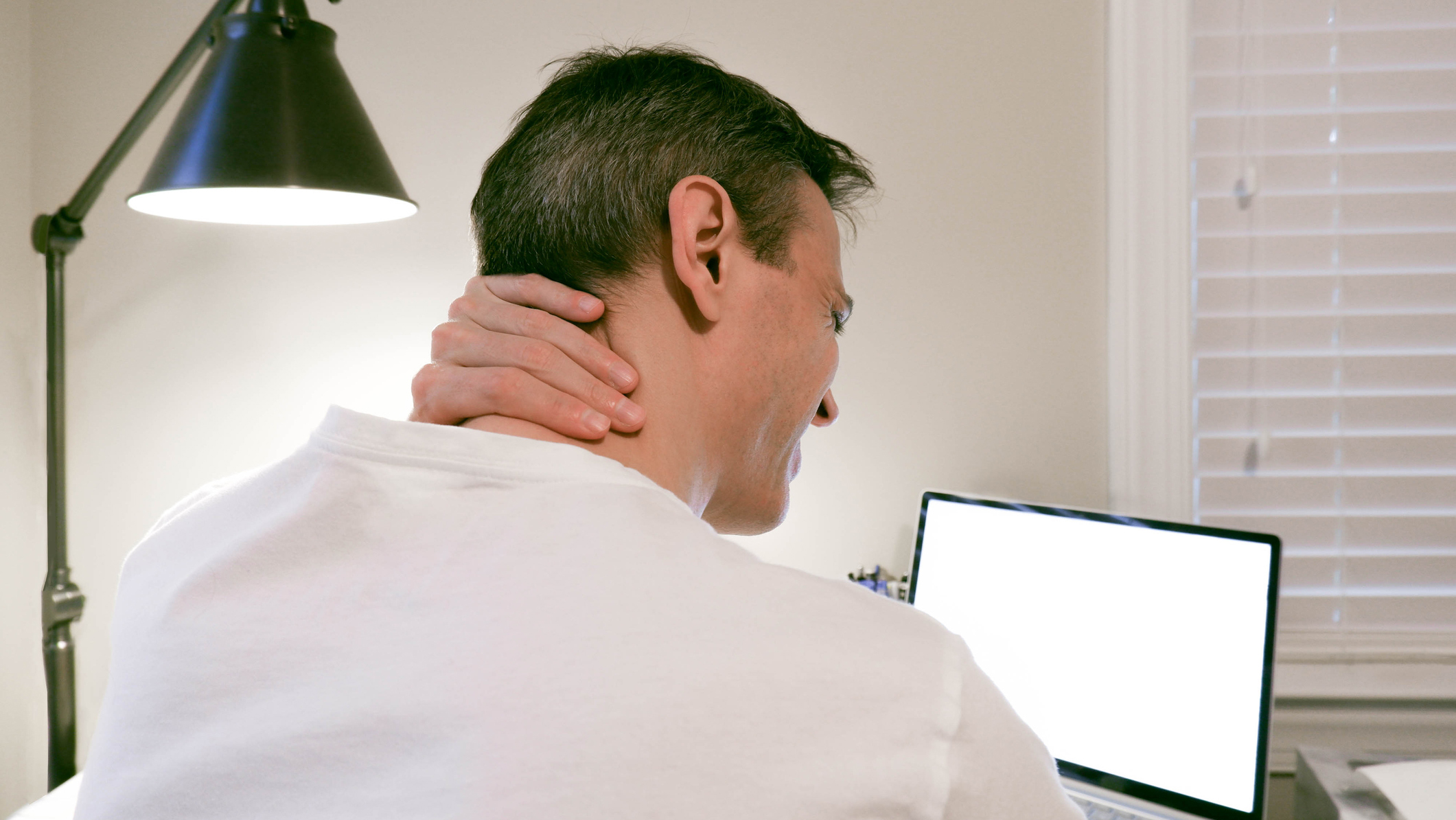How to get a better posture when working from home
Maintaining good sitting posture is essential for a healthy back and neck when working from home, and these tips, posture exercises and stretches should help.

With millions more people now working from home, it’s important to feel physically comfortable at your desk. The furniture used in a commercial office is usually more adjustable, meaning you can lower or raise your desk or chair to suit your height. However, when working from home we often have to make do with the furniture we have (sofas, dining tables, even our beds), which, over time, can lead to bad posture, aches and pains.
Whether you plan to work at home for the foreseeable future, or split your time between office and home working, your home office setup is important to your overall posture. In this feature, we run through some of the options that can help with this, including the best standing desks and an ergonomic office chair.
We’ve also included advice from EMS Works, a company specializing in electro muscle stimulation, covering easy ways to spot and deal with bad posture when you’re working from home. We’ve also included one of the most popular and enjoyable posture stretch videos you’ll find online.
How does working from home affect your posture?
Working from home usually means making the most of the surfaces we already have available, and for some of us that can mean setting up camp on the sofa five days a week, or the dining table if we’re lucky. If we’re very lucky, we may have an existing home office desk to place our laptop on.
However, if our equipment is at the wrong height or distance, it will put extra strain on our backs and shoulders, especially if the surface is too high or low. Now, other things can cause this – neck pain is a common digital eye strain symptom too – so we can’t put all the blame on your home office setup. However it’s usually one of the main culprits.

Other factors that can lead to bad desk posture include being too sedentary and forgetting to regularly stand up or take a few minutes to stretch. This is easy to do when working from home, as we do not have the same routine as when we are at the office, which might involve walking to work or going out at lunchtimes. Luckily, help is at hand, as most fitness trackers now have a built-in feature to remind you to get up and move.
What does good posture mean?
Maintaining good posture at your desk can keep many health issues at bay, including neck and back pain, headaches, and poor sleep. Lack of pain and sore muscles will also improve your mood and aid your focus and creativity, so it’s a win-win for you and your job.
Sign up to receive the latest news, reviews, buying guides and deals direct to your inbox
If you do feel any pain or achy twinges, it’s best to take a break and stretch yourself out. You can also maintain good posture by practicing some quick and easy yoga poses. The best handheld massagers can also offer relief from tightness and tension in your neck and shoulders.
5 expert posture tips for home workers
When it comes to optimizing your physical health, the team at EMS Works know a thing or two about how to minimize pain and help you gain and maintain healthy posture. Here are the team’s top tips for how to improve your posture when working from home:
- Make sure you have a proper chair. As tempting as it is to work from the sofa (or even sit up in bed) this can put a lot of pressure on the lower back, so sit at a desk or table with your coccyx and shoulders pushed back against the chair.
- Take regular breaks to get the body moving and increase your blood circulation. Try to stretch as you walk around your house or room.
- If you have any problem areas, such as the neck or shoulder, then try to perform daily stretches that target those areas to make sure the muscles don’t get too tight.
- Keep everything within arm’s reach at your desk. If you are constantly leaning across or getting up and sitting down this can affect the way we sit. Before you start for the day, make sure everything you need is within easy reach.
- Be sure to check in with yourself to make sure you are not slouching. It often only takes 15 minutes of sitting before we start to slip down again, so set yourself a reminder to check you are in position (see below).
A lot of people are experiencing new neck and upper back pain since working from home, and this posture stretch for your neck, shoulders and upper back from Yoga with Adriene has become one of the most widely shared online...
What are the signs of bad posture?
Aside from shoulder, neck and back pain, the other signs of bad posture include leaning into your screen, rounding your shoulders when working on your home computer, and slouching in your chair. If you or someone you live with notices you’re doing any of these things, it’s time to sit up and take some action.
Other signs of bad posture at your desk include headaches and poor digestion due to the organs becoming compressed. There is also a tendency for the head to tilt forward.
If your symptoms persist, even after stretching, updating your desk setup and moving more throughout the working day, we’d recommend booking an appointment with your doctor or a physical therapist who should be able to help you further.
How to get a better posture in your home office chair
Maintaining good posture is relatively easy when you’re working from home, and by following the basic posture tips below you should soon see signs of improvement:
- Sit with your knees slightly lower than your hips.
- Place your elbows at your side with your arms forming an ‘L’ shape from shoulder to wrist (adjust your chair height so your forearms are parallel with the floor).
- Make sure your wrists are straight and level with your keyboard.
- Place your feet evenly on the floor or a firm surface such as a footrest.
- Make sure your eyes are level with your monitor/
- You should also make sure your chair has a supportive back. Use small pillows or cushions if you need the extra support.
Looking for more home working content? We’d recommend our guide to the best compact printers, and the best light therapy lamps to use each morning if your home office doesn’t get natural sunlight.
Freelancer writer and sub-editor Davina has over 20 years’ experience under her belt, and is one of our go-to writers for wellness content. From handheld massagers to mattresses, Davina has a keen interest in all things relaxation and rejuvenation, and spends a lot of her time covering these areas for Top Ten Reviews. So if you’re wondering which essential oil to use for easing stress, or whether a percussive massager really can banish your knotty muscles, Davina is the one to ask. When not working, she loves reading, practicing yoga and writing fiction.

